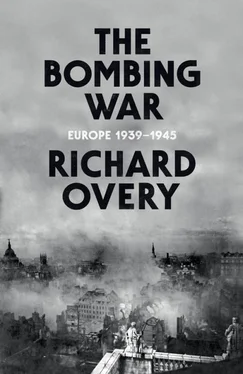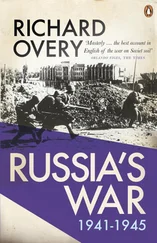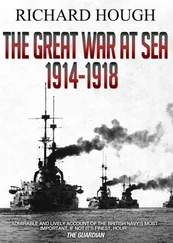The pattern of bombing in Bulgaria, from a limited raid on the railway facilities and the Vrajedna airfield in November 1943 to the final raids in March and April 1944 when the extensive use of incendiaries produced much higher levels of urban destruction, was not an accidental progression. In all the major campaigns in Europe (and in the campaigns mounted in eastern Asia) there occurred an evident escalation the longer the bombing went on and the more uncertain were its results. Air force commanders had an urgent need to demonstrate that their operations were militarily useful in the face of hostile criticism from the other services or the impatience of their political masters. This was true of the German bombing of British cities, the British bombing of Germany in 1940–42 and the Combined Bomber Offensive between 1943 and 1945. Perhaps the best example is the shift in British planning from the 1939 Western Air Plans for limited attacks on Ruhr industrial installations to the decision taken in 1941 to attack the central areas of German industrial cities with large quantities of incendiaries to destroy working-class housing and to kill workers. The reasons for escalation – the phenomenon that explains the exceptional or disproportionate level of civilian deaths in all bombed states – differ in historical detail from case to case. Nevertheless they suggest a common process dictated partly by technical frustration at poor accuracy and navigation or high losses; partly by political frustration at the absence of unambiguous results; partly by air force anxiety that failure might reflect badly on its claim on resources; and finally, and significantly, by the slow erosion of any relative moral constraints that might have acted to limit the damage to civilian targets. Among the many questions about the military conduct of the campaigns, the issue of escalation and its consequences remains the most important. It has significant implications for the current exercise of air power in the wars of the twenty-first century.
For the societies that suffered the bombing during the war there was only one reality that mattered: ‘The bomber will always get through.’ The famous remark by the British deputy prime minister, Stanley Baldwin, on the eve of his departure for the Geneva Disarmament talks in November 1932, that the man in the street ought to understand there was no power on earth yet available to stop him from being bombed, has usually been taken for deliberate hyperbole, to scare delegates at Geneva into accepting a ban on bomber aircraft. Yet though it proved possible during the war to detect aircraft with radar and to intercept them by day and increasingly by night, and to inflict high-percentage rates of loss on an attacking force, in the context of the Second World War, Baldwin was right. Most bombers did reach the approximate target area and disgorge their bombs with limited accuracy on the ground below, turning wartime civilian society into an effective front line. That this would be so was widely expected by the 1930s among the populations of the world’s major states, who saw bombing fatalistically, as something that would define future conflict. ‘It is the height of folly,’ wrote the British Air Minister, Lord Londonderry, to Baldwin in July 1934, ‘to imagine that any war can be conducted without appreciable risk to the civil population.’ 39Brought up on a diet of scaremongering fiction and films, subject by the 1930s to regular drill or instruction or propaganda for air-raid precautions, civilian society came to take it for granted that it would become an object of attack, even that there might be some degree of democratic legitimacy in bombing if all of modern mass society had to be mobilized for war. The British pacifist Vera Brittain, writing in 1940 at the height of the Blitz, observed that in the First World War there had grown up a ‘barrier of inconceivable experience’ between the soldiers on the Western Front and the civilians at home in Britain. During the current conflict, she continued, ‘both suffering and suspense are universal in England herself… There is no emotional barrier between men and women, parents and children, the old and the young, since the battle is shared by all ages and both sexes.’ 40
The concept of civilian society, primarily urban society, as a new front line in war was in reality a novel, indeed unique, phenomenon in the context of the modern age. It gave to the strategic bombing war a second political dimension because it raised the problem of maintaining social cohesion and political allegiance in the face of extreme levels of direct military violence against the home front. The survival of positive ‘morale’ became central to the concerns of those governments whose populations were subject to attack. Morale as such was poorly defined at the time, was difficult to measure in any meaningful way and subject to a great many other pressures besides the effects of bombing. A British Air Ministry report in autumn 1941 confessed that since ‘morale is itself a thing of opinion and not of fact, there is no likelihood even of experts agreeing on the matter’. 41Yet it was the bombing war in particular that was popularly believed by rulers and ruled to have a fundamental impact on the war-willingness and psychological state of the population and it featured regularly in home intelligence reports on the public mood in Britain, Germany, Italy and Japan. This was an equally difficult assessment to make for those doing the bombing. They tried to estimate with some precision what effect their attacks might have on the state of mind of those they bombed, but the answers were more often than not contradictory or confused. The JIC report on the bombing of Bulgaria, produced in January 1944, highlighted social effects that were ‘out of proportion’ to the modest scale of attack, but still concluded that the political results had been negligible.
There can be little room for doubt that the experience of bombing was deeply demoralizing for many of those who survived it, though it could also provoke sudden moments of exhilaration, or induce a profound apathy, but the difficulty in drawing any clear causal links between bombing and popular response is simply that the response was as varied, irregular, unpredictable and diverse as the society that made it. The social reaction to bombing is often treated as if it must be uniform, but it differed widely between states and within communities. This was a reality seldom appreciated by those doing the bombing for whom ‘Germans’ or ‘Italians’ or even ‘Bulgarians’ became simply a generic description of the human target. One of the key questions still debated about the bombing war is why the bombed societies did not collapse at once under the impact, as conventional wisdom before 1939 suggested they would. This is too simple an approach. Bombing did place enormous strains on local communities, and some did experience a cumulative or temporary social breakdown as a result, but it was always a long step from local social crisis to the complete collapse of a war effort. To understand why ‘morale’ did not collapse in Britain or Germany in the sense of a political upheaval is to engage with complex issues of social cohesion defined by regional difference, the intensity of the bombing experience, the nature of the prevailing state and local administration, the peculiar structures of local society and the cultural impact of propaganda. Any narrative of the bombing war has to address the psychological, social and cultural response as well as the conventional military reality: the view from below as well as the view from above. This dual approach has featured only rarely in the existing history of the bombing campaigns, yet it is the one sure way to assess just what effects bombing actually had on the target communities, and to suggest what those effects might be in any future war.
Читать дальше
Конец ознакомительного отрывка
Купить книгу












